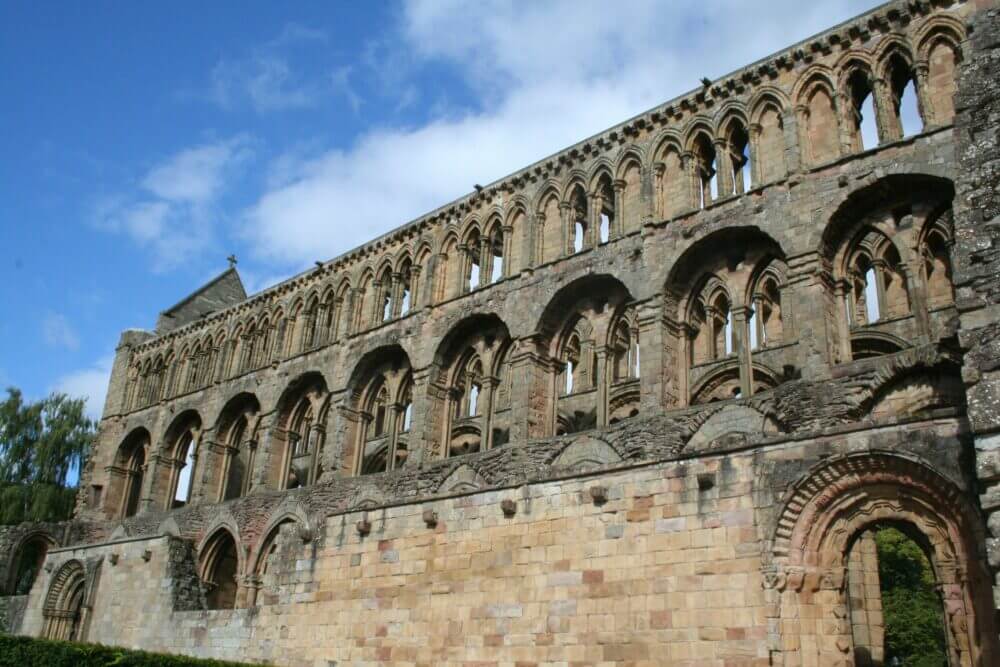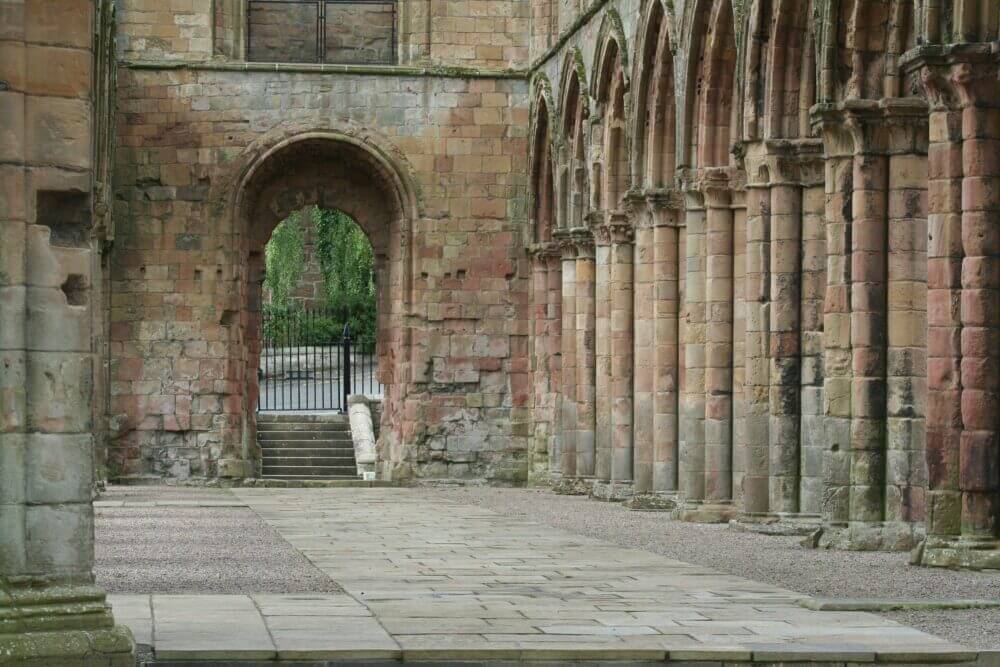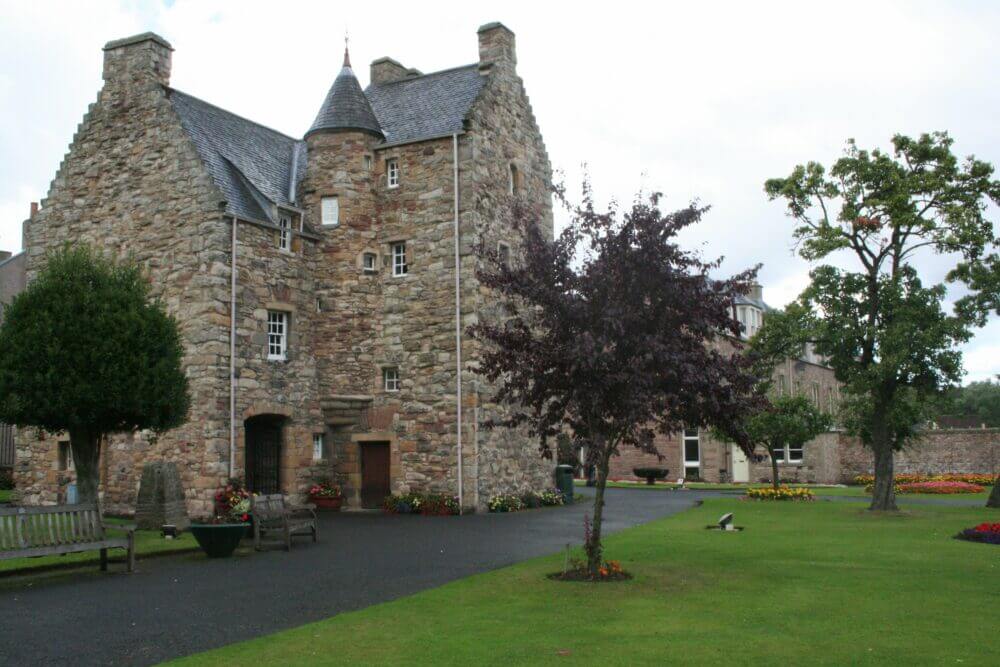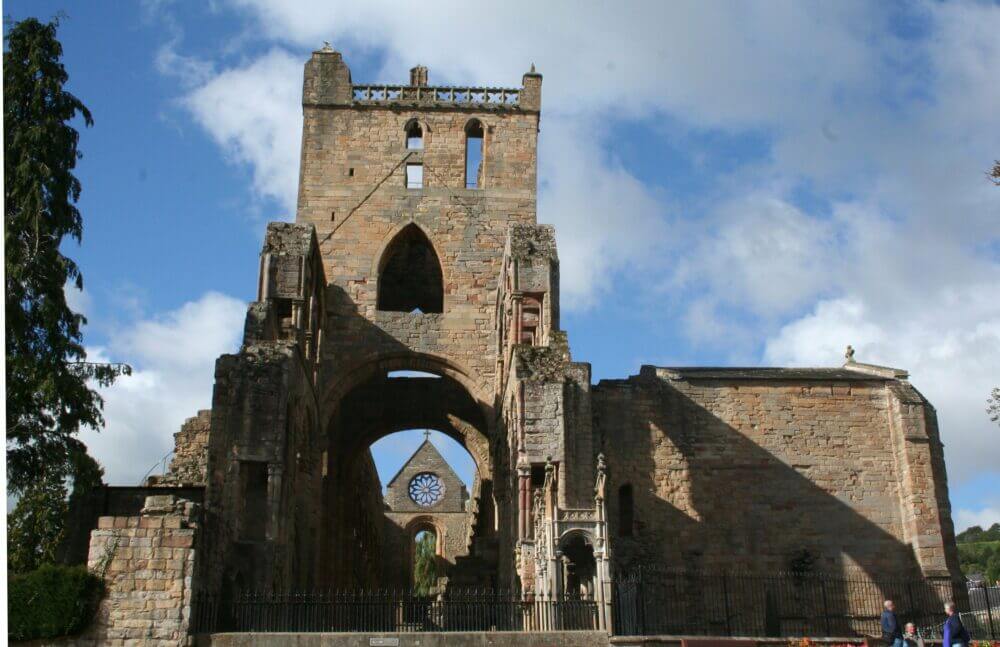Jedburgh Abbey was founded by King David I and Bishop John of Glasgow, initially as an Augustinian priory in 1138, before being raised to abbey status around 1154.

In many respects, the fate of Jedburgh Abbey might be seen as a metaphor for the town of Jedburgh, as its fortunes ebbed and flowed in the prevailing political climate of the day.
Religious houses at Holyrood, Kelso and Melrose
David, also credited with founding religious houses at Holyrood, Kelso and Melrose was a pious king who had lived for much of his early life at the court of his brother-in-law Henry I, king of England. There he had seen and understood the importance of the great monastic houses and their role in 12th century society.
Like all the other great border abbeys Jedburgh was often the focus of English attention. In 1296 Edward I, while staying at Jedburgh Abbey, removed the abbot from his post and installed a pro-English replacement. However as the Wars of Independence grew in ferocity life at the abbey became more difficult, with English soldiers in residence during 1305, stripping lead from the abbey’s roof, possibly to construct siege engines.
Edward I, the ‘hammer of the Scots’ died on 7 July 1307 and his son Edward II, a mere shadow of his father, took the throne. A letter from him to Abbot William of Jedburgh, in that same year, implored him to remain loyal, clearly indicated a continuing pro–English bias.

By 1312 the tide had started to turn in favour of the Scots. Roxburgh Castle was retaken and nearby Jedburgh was threatened, forcing the abbot and eleven of his canons to flee south of the border. The following centuries were punctuated with episodes of violence and destruction in Jedburgh and the Abbey remained in the firing line going through a cycle of destruction and rebuilding in 1410, 1416, 1464 and again after the Earl of Surrey had burned much of the town in 1523.
Rough Wooing
During the period of Rough Wooing Jedburgh and its abbey again suffered as England’s Henry VIII sought to impose his son in marriage to Mary Queen of Scots.
The Scots’ refusal to agree to the marriage brought Henry’s army north in 1544 and again in 1545 causing considerable damage in Jedburgh and throughout the Scottish Borders.
Much of Jedburgh Abbey’s Romanesque and Gothic architectural splendour is still clearly visible. The abbey church for example is still relatively complete when compared to some of the domestic buildings.
However, the matter of the identity of the building’s architect generates considerable scholarly debate.

Professor Malcolm Thurlby of York University, a leading expert on medieval art and architecture, in a paper, Jedburgh Abbey church: the Romanesque fabric, for the Society of Antiquaries of Scotland examined a number of possible sources that Jedburgh Abbey architects may have drawn inspiration from.
Romsey Abbey in Hampshire is one possible candidate, considered not only because of some similarities in design but also because Jedburgh’s founder King David 1 had an aunt who was a nun at Romsey. Other experts cite Reading Abbey in Berkshire and Tewkesbury Abbey in Gloucestershire.
Jedburgh Abbey: 8th century shrine
The abbey’s visitor centre should be the first port of call as it allows an overview of how the buildings might once have looked. Also, a range of some of the most important artefacts are on display there and include a beautifully carved, remarkably well-preserved shrine which dates to the 8th century, a merelles board (a game for two players) and a carved Christian stone dated to the 9th or 10th century.

Following the Reformation of 1560 the importance of the abbey declined and only a handful of canons, those who embraced Protestantism remained.
By the late 17th century (1668-71) there were fears about the structure of parts of the building and a new parish church was built within what remained of the abbey church, between the central tower and transepts.
Related articles
In 1875, on the instructions of the 9th Marquis of Lothian, a new parish church and manse was constructed on the far side of the Jed Water. The Marquis also paid for major repairs to be carried out on other parts of the abbey buildings.
In 1913, Jedburgh Abbey was placed in the care of the state.
Jedburgh Abbey Visitor Information
For information on opening hours, cost of entry and other tips to help you plan your visit, go to the Abbey website.